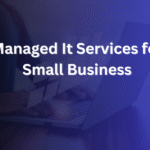When Apple released the first iPhone in 2007, most consumers viewed cell phones as devices for making calls or sending messages. Fast-forward over fifteen years and smartphones aren’t just devices—they’re central to everyday life.
But here’s the critical insight: Apple didn’t just succeed alone. It transformed entire industries, from app developers to phone accessories, mobile payments, and social media. One innovation sparked a massive ripple effect across the ecosystem.
As an entrepreneur, innovator, or product manager, you must understand that innovation isn’t just good for your startup—it’s an engine of growth for entire industries. Your product might be groundbreaking, but its real impact comes from the broader transformation it initiates.
This article unpacks exactly how entrepreneurial innovation creates growth across entire industries, not just for the disruptor but for the entire economic ecosystem.
When Entrepreneurs Innovate, Everyone Benefits
Entrepreneurs often approach innovation with the aim of individual company success. But in reality, a successful new product rarely stands alone. Instead, it reshapes market demand, compels industry adaptation, and triggers entirely new opportunities. This is the entrepreneurial ripple effect:
- Innovation sparks new consumer demands
- Established companies must adapt or risk becoming obsolete.
- New markets, jobs, and value chains emerge from innovation.
Let’s dive deeper into these dimensions with clear, practical examples.
Innovation Creates Demand that Didn’t Exist Before
Innovators often uncover hidden needs or create entirely new ones. Consumers change their behavior, expectations, and buying habits when a new product or service enters the market and solves a previously unrecognized problem.
Example: Netflix and the Rise of Streaming
Netflix initially launched as a DVD-by-mail rental service but truly disrupted media by pioneering subscription-based video streaming. Before Netflix streaming took off, binge-watching wasn’t a familiar habit. By 2024, Netflix surpassed 250 million subscribers globally, transforming entertainment consumption worldwide.
This innovation didn’t just make Netflix successful; it reshaped consumer expectations permanently:
- Consumers demanded convenient, on-demand content from all entertainment companies.
- Hollywood studios shifted strategies, investing billions into streaming services.
- Other industries (broadband providers, home-theater equipment manufacturers, and digital advertising firms) also benefited from the streaming boom.
Netflix didn’t just innovate a new product—it created an entirely new consumer demand, altering market dynamics permanently.
Other Examples Include:
- Airbnb: Transformed spare rooms and properties into marketable assets, creating demand for home-sharing and short-term rental management companies.
- Uber & Lyft: Changed how consumers thought about transportation, driving rapid growth in the gig economy and transportation logistics solutions.
Established Companies Adapt—or Get Left Behind
Entrepreneurial innovation forces established businesses to evolve quickly. When a startup introduces a transformative product, existing industry leaders face two clear choices: adapt rapidly or risk irrelevance.
Case Study: Tesla and the Auto Industry’s Shift to Electric Vehicles
When Tesla introduced electric cars to the mainstream market with its sleek, high-performance Model S in 2012, traditional automakers initially viewed electric vehicles as niche products. However, Tesla’s explosive growth—reaching a valuation of over $1 trillion in 2021—triggered a dramatic industry-wide shift:
- General Motors pledged $35 billion toward electric vehicle development through 2025.
- Ford announced that electric vehicles would constitute 40% of its global vehicle volume by 2030.
- New infrastructure businesses emerged: EV charging networks like ChargePoint grew rapidly, deploying tens of thousands of public charging stations.
- Battery manufacturers received billions in new investments.
In short, Tesla’s innovation didn’t merely improve its own market position; it pushed legacy manufacturers to adapt, sparking multi-billion-dollar investments and creating thousands of new jobs in adjacent industries.
Key Lessons for Established Companies:
- Proactive adaptation can convert threats from startups into powerful growth opportunities.
- Partnerships with innovators help incumbents respond faster.
- Investing in new technologies can position established firms to dominate future markets rather than chasing innovation from behind.
New Products Mean New Opportunities (and New Jobs)
Entrepreneurial innovation isn’t just about disrupting existing markets but also creating new ones. According to a report from the Economic Innovation Group, startups founded in the last decade account for over half of net new job creation. Innovation truly fuels job growth.
Case Study: Renewable Energy and the Green Economy
Entrepreneurs in solar and wind power transformed clean energy from a niche sector to a global economic force:
- Employment in renewable energy will surpass 12 million jobs worldwide by 2023.
- According to the Bureau of Labor Statistics, solar photovoltaic (PV) installers and wind turbine service technicians have become some of the fastest-growing occupations in the U.S.
- Startups like Tesla Energy, Sunrun, and Vestas created entirely new ecosystems around battery storage, innovative grid technologies, and home energy management.
Entrepreneurial action in green tech didn’t just reduce reliance on fossil fuels; it created vibrant new markets and high-paying jobs in sectors that simply didn’t exist two decades ago.
Other Industry Examples:
- Fintech: Companies like Square, Stripe, and PayPal created an entire industry around digital payments, financial infrastructure, and mobile banking.
- E-commerce: Amazon, Shopify, and Etsy have led to millions of small businesses relying entirely on digital sales channels, creating new jobs and economic opportunities.
One Innovation Can Create Entirely New Value Chains
A single innovative product often triggers a cascade of new value creation. This doesn’t just mean new jobs or products; it means entirely new value chains.
Example: Smartphones and Their Economic Impact
When smartphones took off, they didn’t just make handset makers rich—they transformed the entire technology and telecom industries:
- Mobile app markets grew into a multi-trillion-dollar ecosystem.
- Accessories (phone cases, wireless headphones, chargers) became a multi-billion-dollar industry.
- Industries like gaming, digital advertising, and mobile commerce expanded exponentially.
A single product—the smartphone—spawned multiple interconnected industries, generating billions in revenue and employing millions globally.
How Entrepreneurs Can Foster Value Chains:
- Identify complementary businesses that could benefit from your innovation.
- Collaborate strategically with partners in related sectors.
- Think beyond initial customer segments to potential secondary markets.
How Established Companies Can Ride the Wave of Innovation
Entrepreneurial innovations don’t have to threaten established businesses—they can represent enormous opportunities if companies approach them proactively.
Practical Strategies Include:
- Partnering with startups: Companies like Walmart have partnered with fintech startups to create modern financial services tailored to their consumers.
- Investing in innovation: Corporate venture capital units allow established companies to benefit directly from the entrepreneurial ecosystem (e.g., Google Ventures, Salesforce Ventures).
- Fostering internal innovation: Encouraging internal teams to adopt startup-like agility and innovation processes.
Advice for Entrepreneurs: Think Beyond Your Own Product
If you’re an entrepreneur, don’t limit your vision. Understand your broader potential impact on your industry:
- Look for ways your innovation can benefit complementary sectors.
- Build strategic alliances early to amplify your impact.
- Consider how your product could drive systemic change beyond your initial customer base.
Conclusion
Entrepreneurial innovation isn’t just good for startups—it’s transformative for entire industries. It creates new demands, forces adaptation from established companies, spurs new jobs, and sparks new industries and value chains.
As entrepreneurs and innovation leaders, remember this: Your next product could reshape markets and industries far beyond your walls. Embrace the ripple effect; your innovation might just ignite an industry-wide transformation, benefiting businesses, consumers, and entire communities.
Innovation isn’t merely disruptive—it’s transformative for entire economies. And that transformation begins with your next great idea.







